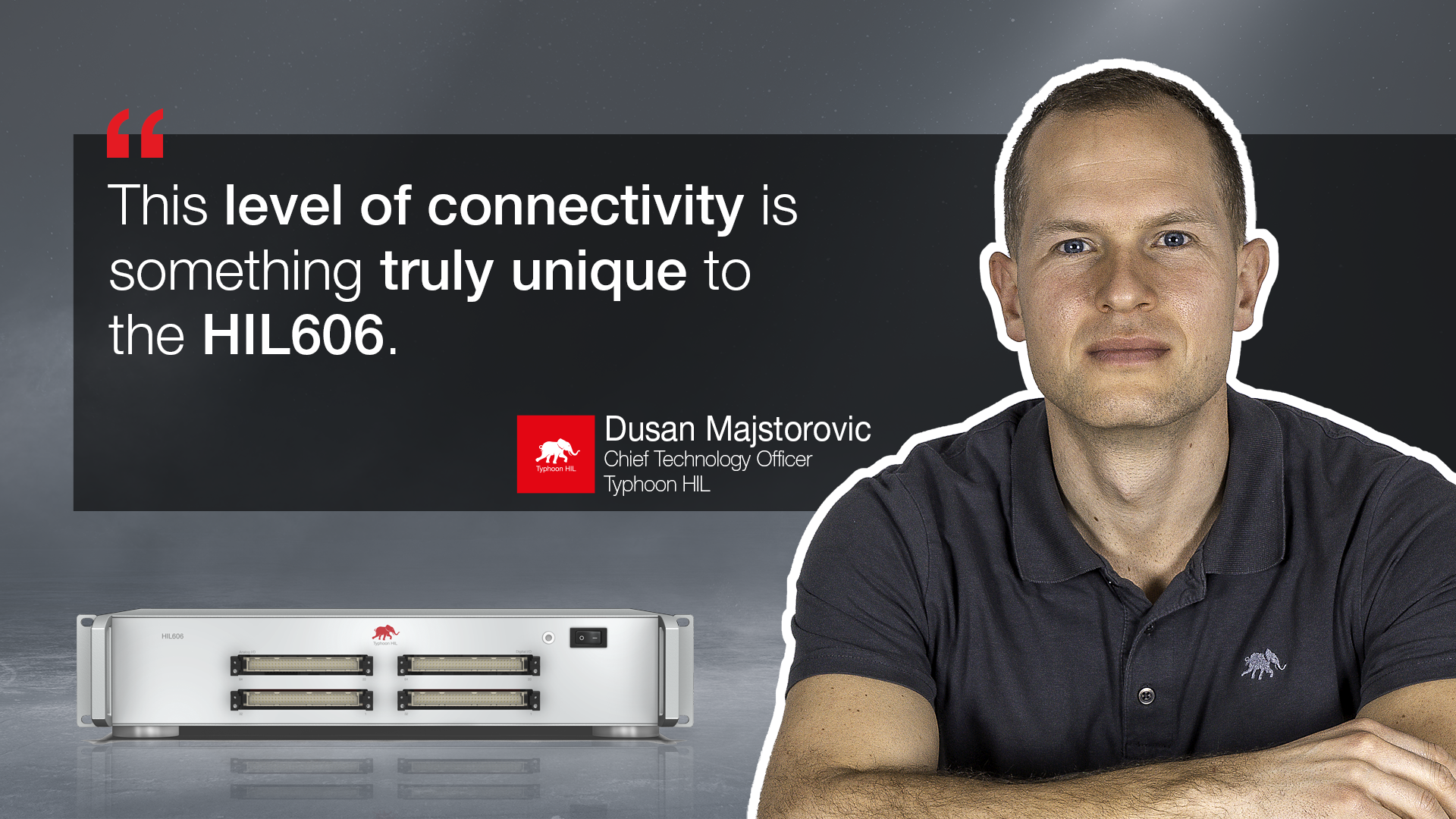Applications | What was the motivation behind the development of HIL606?
The HIL606 is built as an answer to applications that need complex high-fidelity models running at the highest time resolutions possible. It also answers to the ever-increasing number of device interface requirements driven by user demand.
HIL606 really shines when we need to model fast-switching complex converters, as in e-mobility applications. There we talk about multi-module, typically silicon carbide-based (SiC) converters, with switching frequencies in the range between 50 and 500 kHz. Besides having a device that can support the time resolution of such models, we also need sufficient capacity for the size of those models, both in processor and IO capacity – and HIL606 covers that as well.
Applications with complex system models also benefit, such as distribution systems or microgrids. HIL606 is extremely well-equipped for microgrids that need to include many generic or average Distributed Energy Resource (DER) models with integrated low-level controllers. What is impressive is that this device can support around 2.5 times more average models than the HIL604 device, making it the new flagship device for both the 4th Generation devices and the entire 6 series device line.

Technology | What do the 4th Generation devices bring technology-wise?
In general, higher speed. This means around a 75% increase over HIL604 on the FPGA solver clock-speed side, although we are working on improving this number further. In terms of CPU performance, the difference in the 4th Generation units is actually even higher: depending on the model, we observe around 10 times faster execution speed over HIL604 – an order of magnitude improvement.
Connectivity | What is truly unique about the HIL606?
We have seen similar levels of speed and capacity in some of the previous devices, but this level of connectivity options and connectivity capacity is something unique to the HIL606. Completely new interfaces like EtherCAT, CAN FD, and the ability to expand the unit with an SSD drive for long-term data acquisition are some of the many additions implemented for the first time in this device. Some ports were increased in their number and new protocols were added as well, based on customer demand.
This all adds to the flexibility in the way we organize network interfaces in test setups and connect to third-party devices. In addition, HIL606 brings strong support for low-level and time-critical Ethernet-based protocols, like IEC61850 GOOSE and SV. A new type of paralleling is implemented as well, providing very high speed and low latency combined with greater flexibility due to the usage of the common fiber optics physical layer and eliminating the need to close the device chain.

User Perspective | How easy will it be to upgrade to HIL606 for existing users?
Technically, it is possible to upgrade to a HIL606 from any of our current HIL devices in a plug-and-play fashion using the existing interface boards. Interestingly, the HIL606 is fully pin-compatible with the HIL604 – the same pinout, connector layout, and voltage levels. That allows you to just unplug your controller (device under test, DUT) from the old device and plug it into the HIL606. On the modelling side, HIL606 can run just any model developed for any device with no modifications whatsoever. This makes upgrades straightforward and mitigates any technology barriers in adopting a new generation machine.
One Word | How would you describe HIL606 in one word?
Flagship.

Credits
Interviewers l Samantha Bruce, Debora Santo
Text l Debora Santo, Sergio Costa, Samantha Bruce
Visuals l Karl Mickei, Dragan Zuber
Editor | Debora Santo




2 comments on “Meet the New HIL606 with Typhoon HIL CTO Dusan Majstorovic”
Can we buy Typhoon HIL606 for Academia? how much should be spent as budgetary price for HIL606 for Academia? would you please explain detail for Hardware/Firmware as well as required software.
Hi Houman and thank you for reaching out! The HIL606 can be acquired by academics as well and the best route to getting more information about the Academic offering is to fill out the “Request a Demo” form here: https://www.typhoon-hil.com/request-a-demo/ – someone from our Academic sales team will then reach out to you shorty.